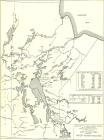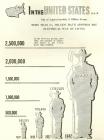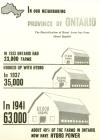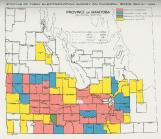2
Farm Electrification commenced after the Second World War in Manitoba. It was a movement that truly affected the lifestyle of the farm population. In 1942, the Manitoba Power Commission started to survey the possibilities and benefits that electricity would bring to the farms to alleviate a shortage of labour. After the survey was successfully completed and the war ended, the Manitoba Power Commission commenced to sign farmers up for the new technology and build lines. With the emergence of Farm Electrification, educational programs and workshops were set up to inform people about the use of this technology. Also, farmers were taught wiring techniques and about the use of motors for farm equipment. Farm women were taught about electric appliances and other domestic devices. Farm Electrification transformed the lives of all farm families. Electricity provided a means to perform farm duties in different ways; from milking cows to baking a cake. Life on the farm was transformed, with electricity promising relief from farm drudgery.4
Before the Farm Electrification programme emerged in Manitoba, extensive reports and surveys where conducted. The Premier of Manitoba, the Honourable John Bracken created the Manitoba Electrification Enquiry Commission on June 11, 1942. Premier Bracken stated the mission of the Commission in a letter addressed to the chairman, Dr. Schmidt:"The rural hydro electric system of Manitoba has been in existence for more than twenty years, and has been actively extended during the last ten years. There are, however, still only five hundred farmers, out of a total of some fifty-nine thousand, who have found it possible to use this service. It is clear, therefore, that much still remains to be done to extend to the farms of Manitoba a service which will not only make them more productive by providing facilities for the diversification of agriculture, but lessen the physical drudgery now borne by farm women and make farm life more attractive to young people."
The government was worried that since farm work was deemed as labour intensive, that the agricultural realm and partial backbone of Manitoba would become depleted without the aid of electricity. Thus, "the Government is anxious to gather together the data upon which it can formulate a practicable policy for the expansion of the Manitoba hydro electric system to serve as large a proportion of Manitoba farmers as possible."
6
The newly founded Manitoba Electrification Enquiry Commission commenced gathering and sorting data in order to prove the feasibility of farm electrification, and to plan a programme for implementation aimed at the postwar period. The first step of the Commission was to compile, "a census of the farmers now receiving electric power, ascertaining the date when they first took the service, the cost of this service to them, their utilization of energy, and other matters." In order to gather census information the Commission worked in co-operation with the Department of Agriculture and selected seven representative townships in the province. Within these representative areas a survey was conducted of: the pattern of agriculture; the type of buildings; distance between farms; annual income, and any other relevant statistics in order to create an estimate of the cost of bringing electric power to the farms in several areas of the province. Thus, the groundwork was being laid for the provision of electric power to the farming communities.9
The Commission also stepped outside Manitoba's provincial borders to explore other provinces and countries experiences regarding farm electrification. Ontario and some American states were implementing farm electrification programmes. The Commission made special investigations of the problems, procedures and achievements in these two areas. Moreover, a special questionnaire was prepared and sent to all co-operatives distributing electricity to the farmers of North Dakota and Minnesota, as well as to selected co-operatives of other states. Out of this mass of opinion, fact and data the Commission was able to make a positive recommendation with regard to the feasibility of farm electrification in Manitoba.The Commission completed their report entitled, "A Farm Electrification Programme: Report of Manitoba Electrification Enquiry Commission," in December 1942. The report was submitted to Premier Bracken with a short letter, "Dear Sir: We have the honour to submit herein our report on the problem of farm electrification for the postwar period." The report was 211 pages long, stacked full of statistical information, and the only problem evident with regard to implementation was that the war was not yet over, which meant there was a money and material shortage as well as a labour shortage.
11
In November 1943, the Manitoba Power Commission selected the Rural Municipality of Minto in southern Manitoba as a trial area to test the suitability of their forms and questionnaires. Minto was chosen for the survey due to the fact that it was considered a typical municipality. Minto had 246 farms with the density of 65.5 farms per township. Farmers with unoccupied buildings or buildings that were weathered, and who did not desire electric power, totalled 21 (8%). Survey forms were completed by 241 farmers (92%). In addition, 184 (76.3%) of the farmers reported that they wanted to install electric power services. 34 (14%) of the farmers who returned the forms were renters. According to the statistics, everyone that could have electric power on the farm sought it.12
Manitoba Power Commission's Farm Electrification Survey with Appliance and Wiring Questionaire.1942
Manitoba

13
The adjacent form was another survey on desirable appliances. Out of the 241 farmers who submitted forms, 175 completed the questionnaire on appliances. The average that the farmer would spend on the basis of prewar prices was $611.00 on appliances, equipment and wiring. 99 farmers or 56.5% stated that they would pay cash for wiring and appliances; 76 or 43.5% indicated that they would need financing, but would be prepared to pay about 25% in cash. The desire to have the convenience of electricity and an electric servant on the farm was amplified by the number of farmers who were willing to part with their hard-earned money.The Manitoba Power Commission completed their survey of the Rural Municipality of Minto and moved on to other municipalities. However, by targeting this one municipality the Commission realized that some of the forms had to be modified. Simplification of the forms led to more accurate information on farm location and specific building location for wiring estimation. With the revised forms surveys continued, it being postulated that the proposed area of farm electrification should be covered by the survey to enable the proper construction and engineering of the power system.






